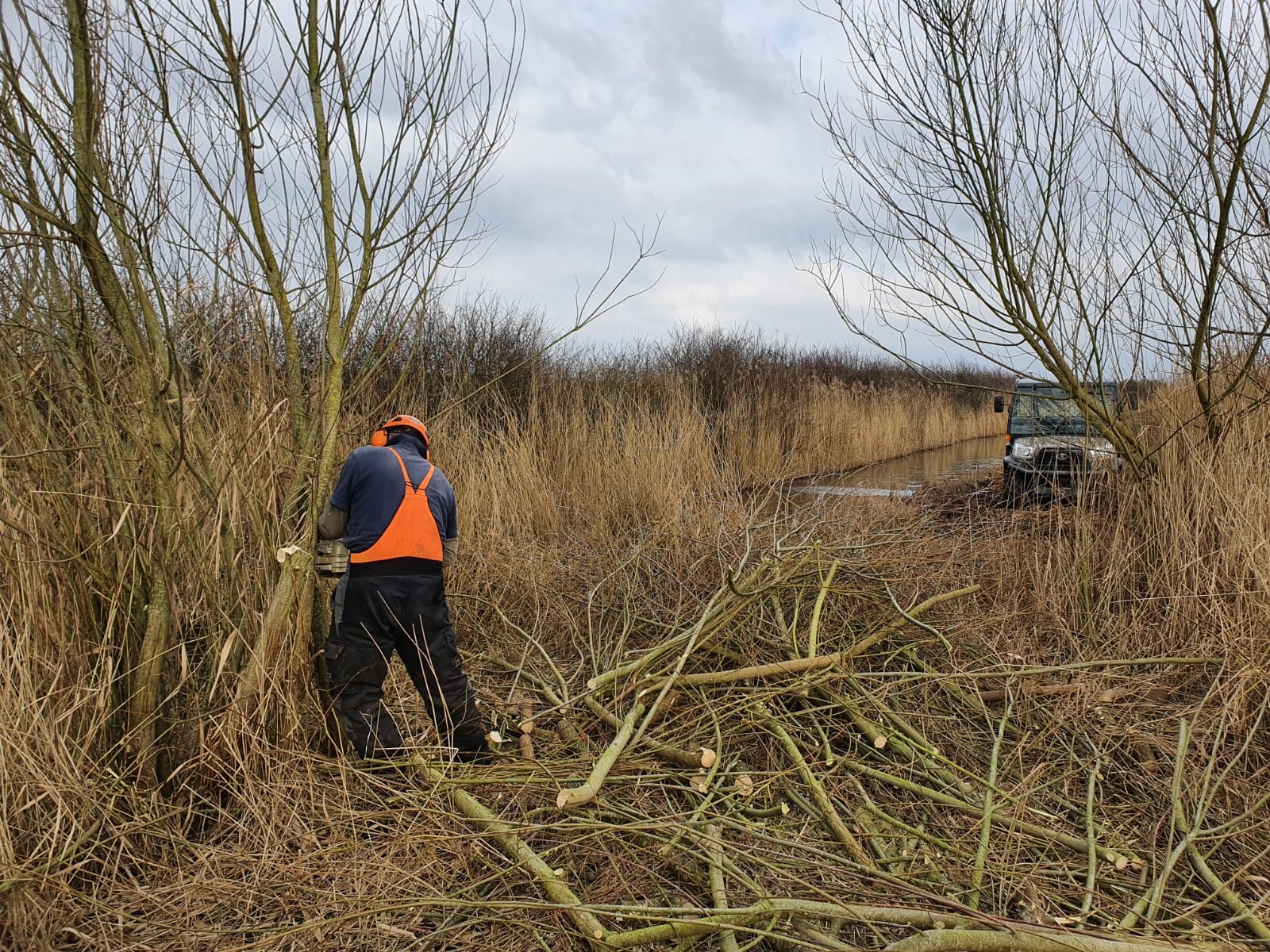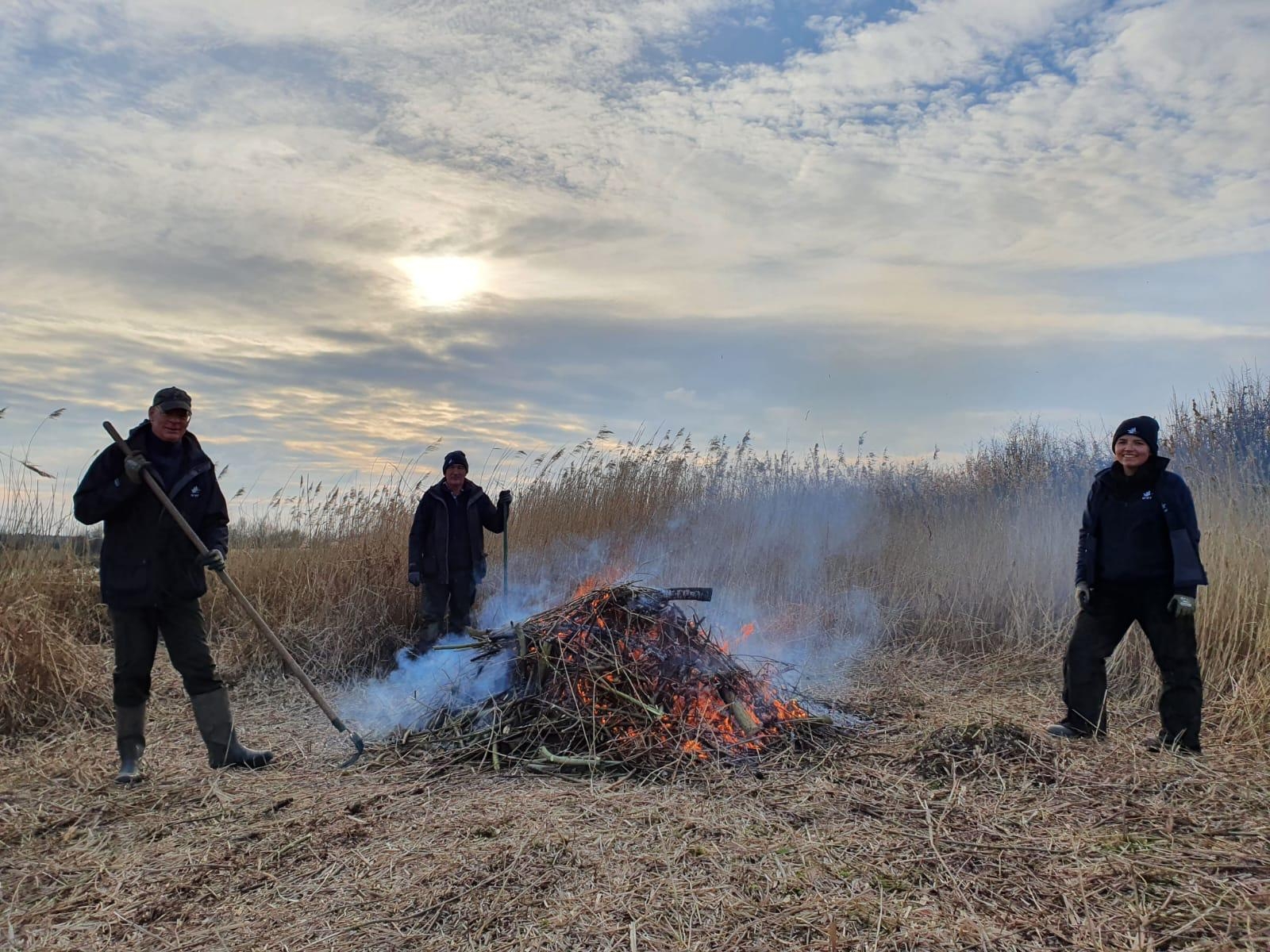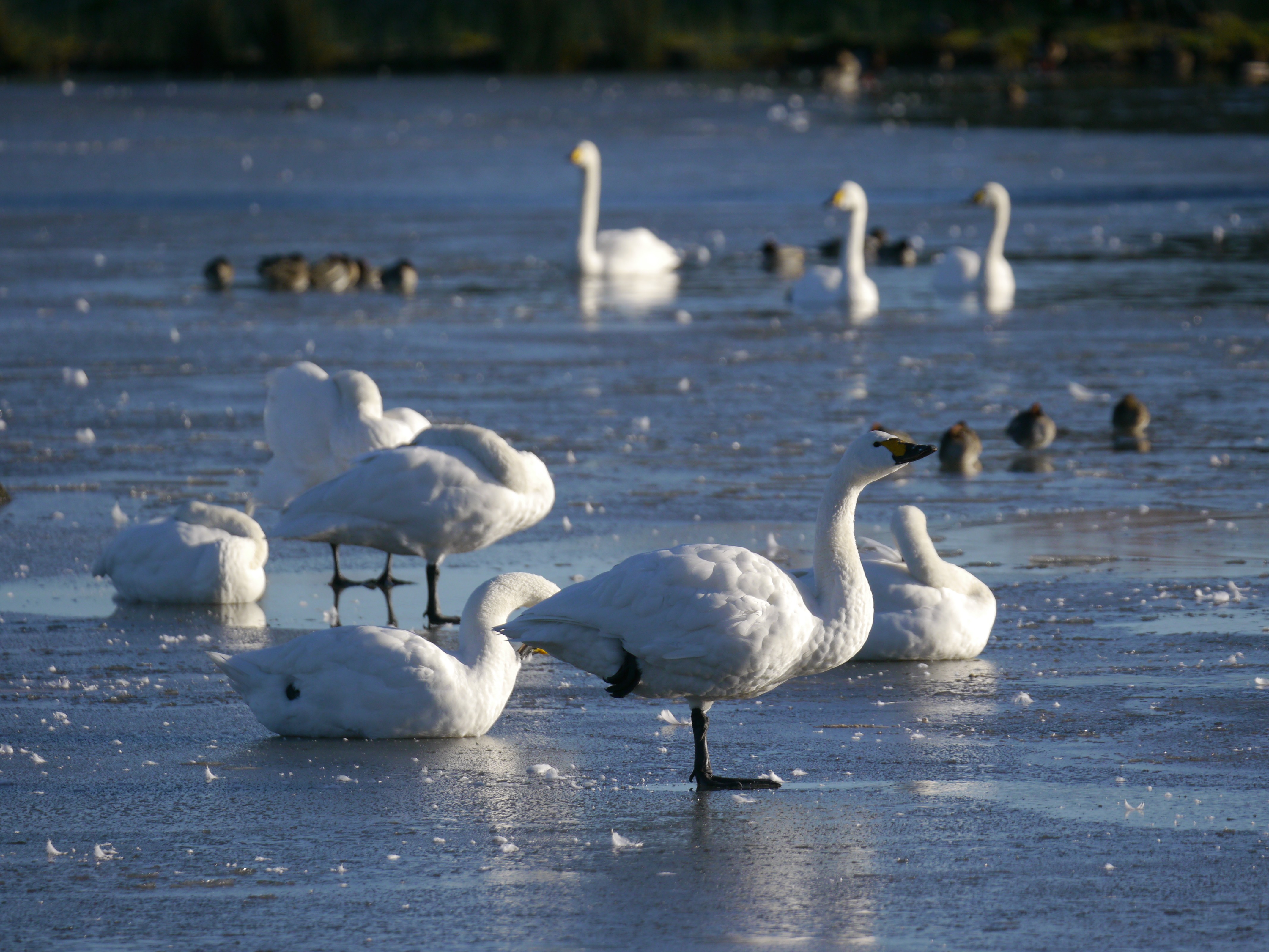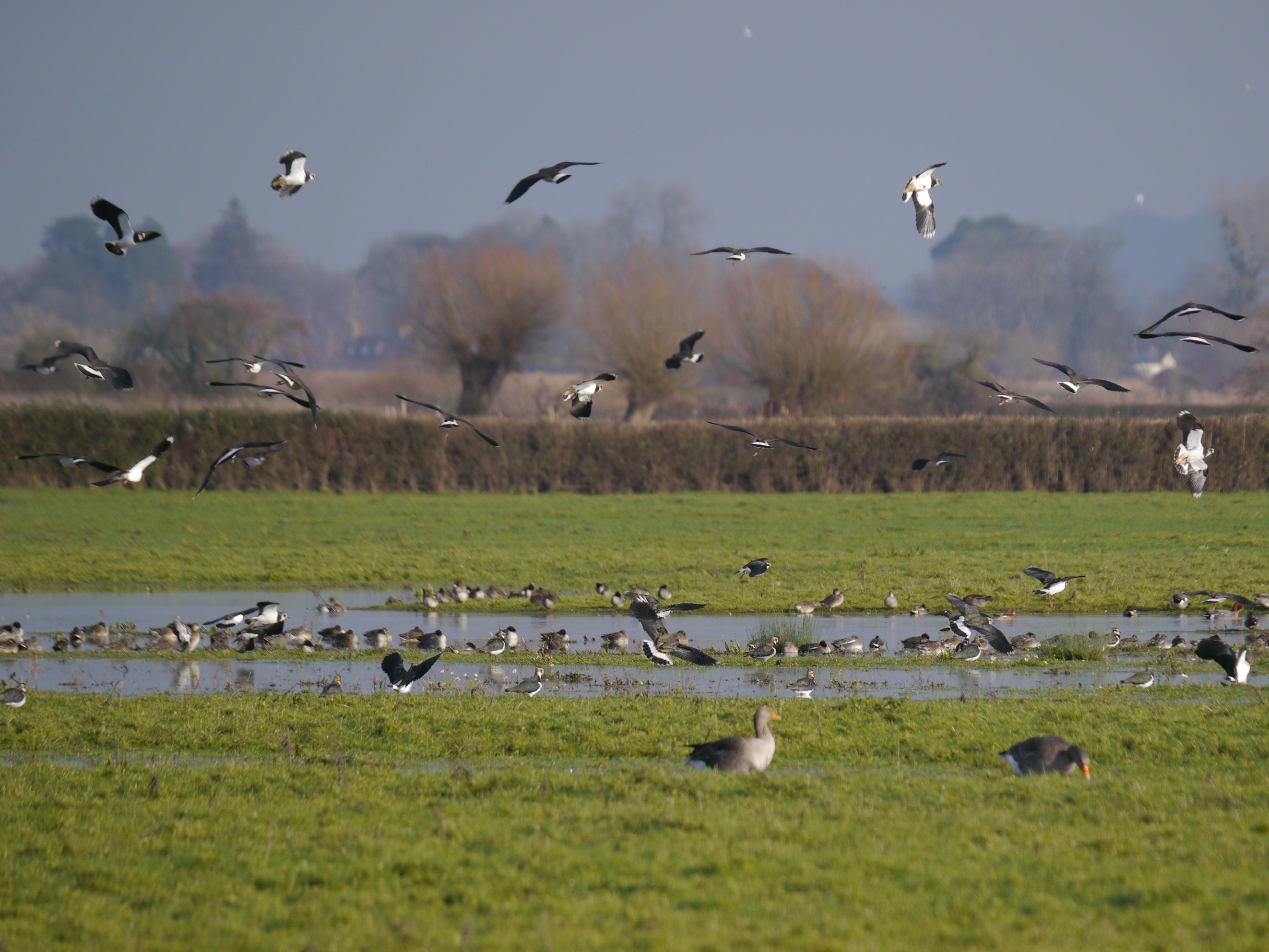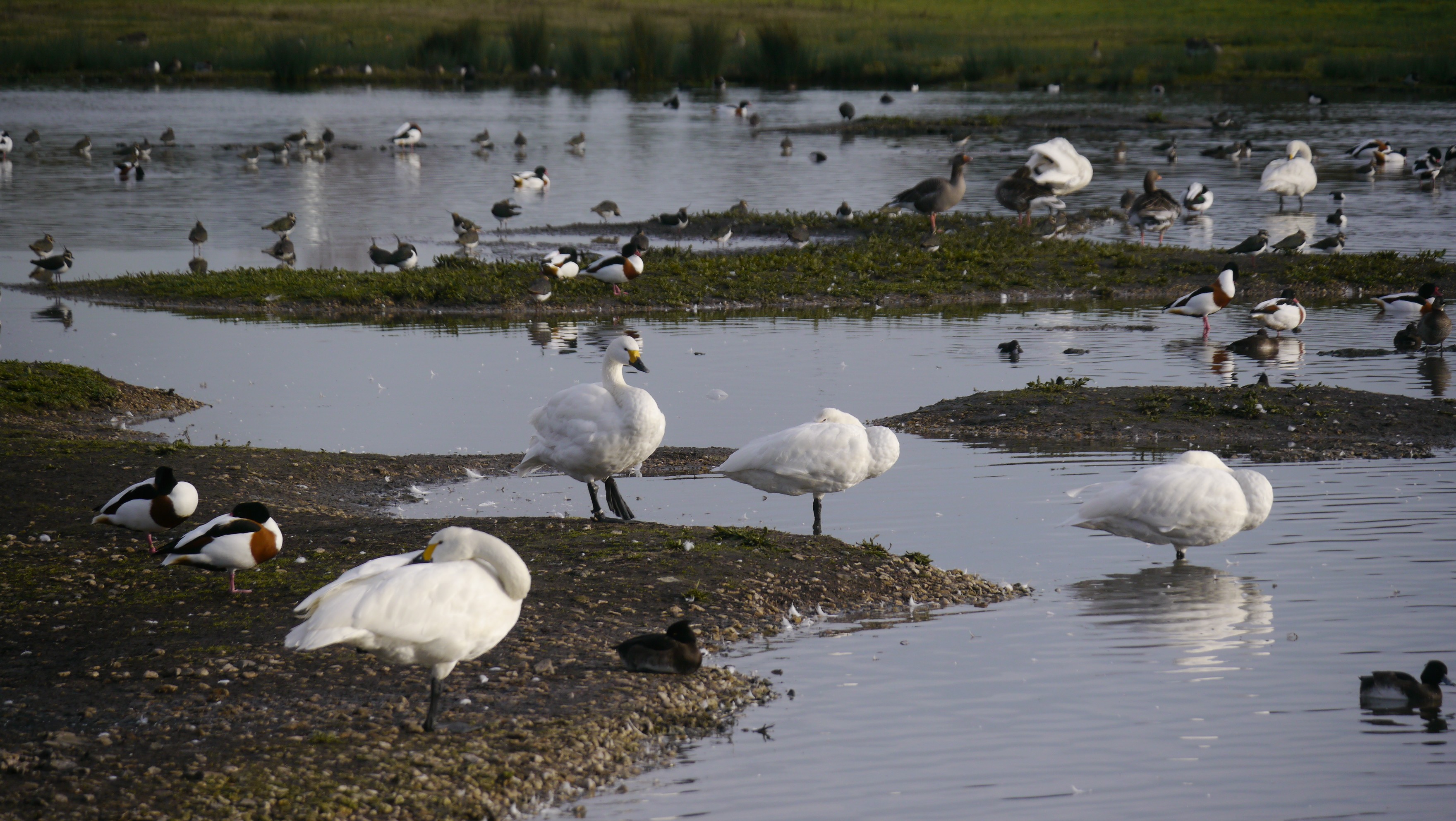A very rare u-turn
Since last Friday we've witnessed a rarely seen phenomena
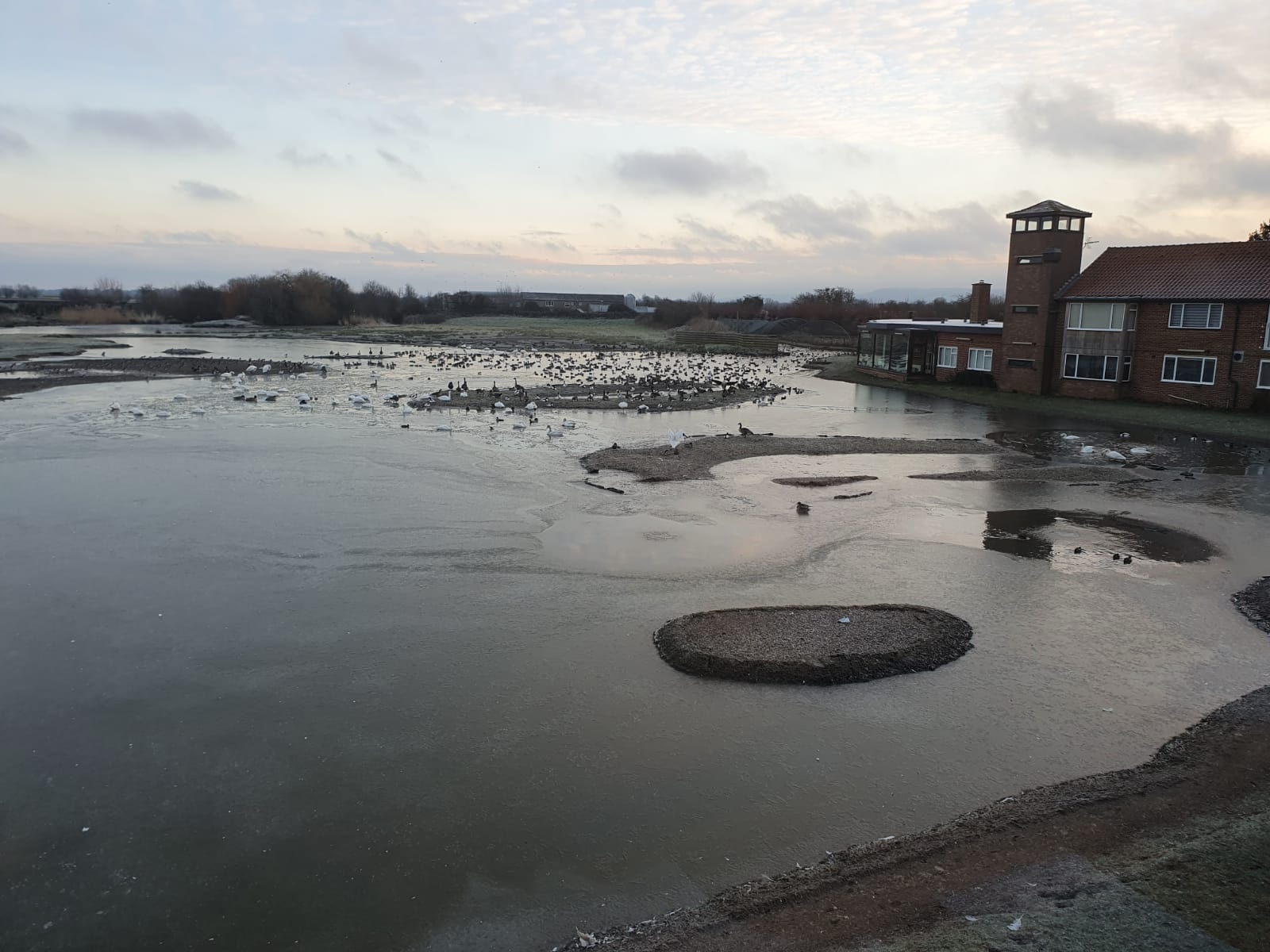
Since last Friday we've witnessed a rarely seen phenomena with our Bewick's Swans making a u-turn and returning to Slimbridge.
Bewick's Swan update
On Friday morning the flock numbered 79 birds and with the forecast of cold weather on its way from the east, we expected them to stay a little longer. Over the weekend 20 birds departed, but by Tuesday 11 of those birds had returned along with a 12th bird - a completely new arrival we've never recorded here on the Reserve. Our researchers are able to recongnise the birds by their unique bill patterns and give each bird a name, so this new arrival was duely called Darcy after the storm that caused the birds to turn back and bring this new arrival to us. A photo of the bird is below.
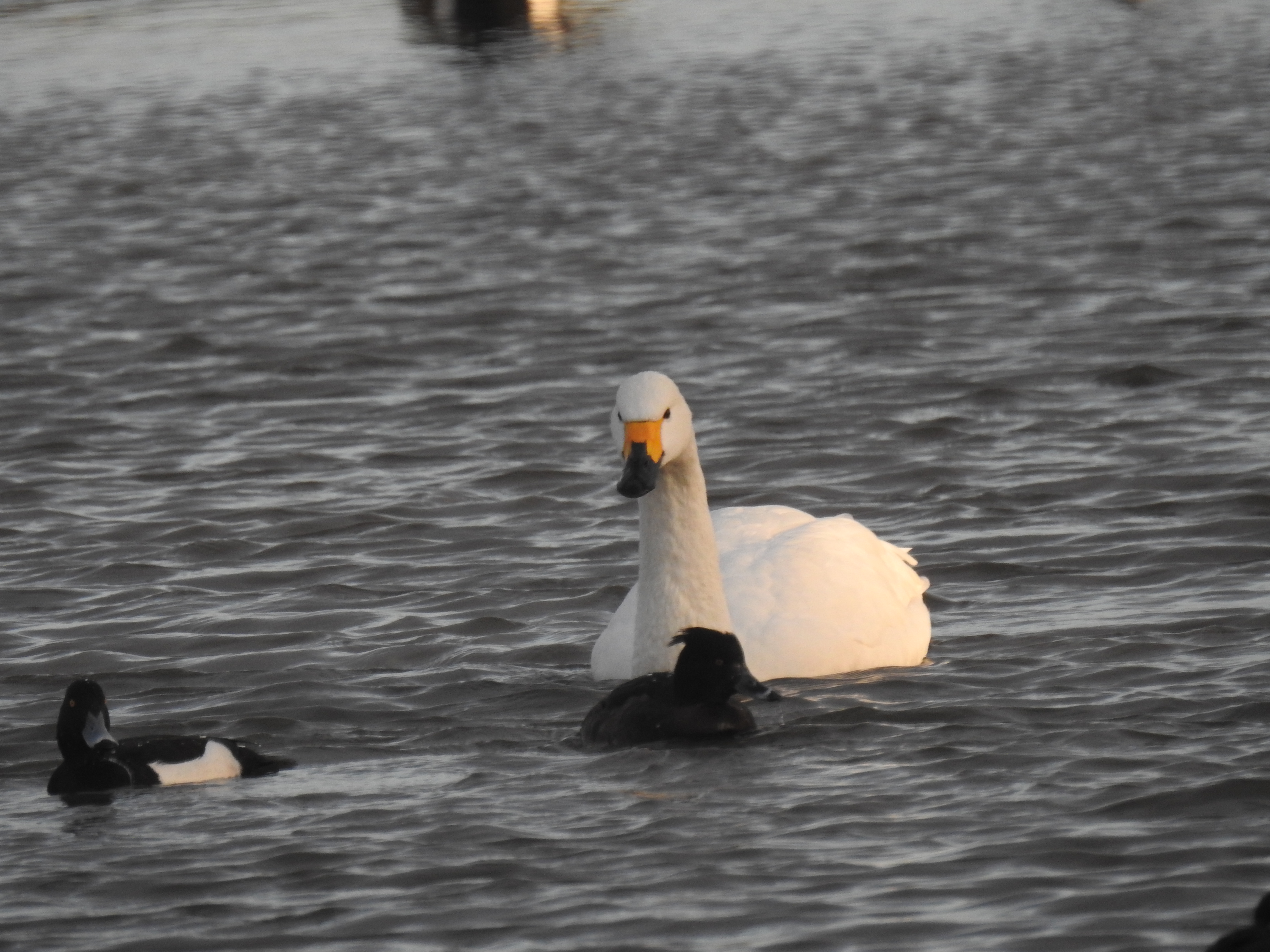
So far as we can tell, we think this is the first time in over 40 years that the swans have been forced to make a u-turn and return to Slimbridge after starting their migration, but thanks to social media it could be the first time we've ever managed to prove it.
On Saturday 6th February a tweet was posted on Twitter with excitment of a flock of 18 Bewick's Swans appearing as the fog lifted at Stanford Reservoir on the Northamptonshire / Leicestershire border. After our researchers made contact they received photos of the flock which allowed them to identify two of the birds from their bill pattern - Flight Sabre and Monsilver. Both these birds were at Slimbridge on Friday, and as the Rushy had 18 fewer birds on Saturday than Friday we presume this was 'our' flock heading north east towards Norfolk before heading across to Europe and onwards to Russia. An amazing occurence to document!
The flock had been on migration when they came across the cold weather arriving from the east, so presumably dropped in to the nearest waterbody to roost and wait until the fog cleared. As it did clear things got colder and the bird decided to perform their rare u-turn with the 11 birds arriving back on Tuesday, followed by the identified pair of Flight Sabre & Monsilver on Wednesday. This morning (Friday 12th) we have a total of 74 birds on the Rushy.
Other wildfowl
The Cackling Goose has reappeared with the Canada Goose and Barnacle Goose flocks, with the bird usually out on the Dumbles. Otherwise wildfowl numbers have dropped dramatically with the freeze up as birds move off to warmer areas or the estuary in order to feed. The only additions to the wildfowl list have been three Goldeneye who made a brief appearance on site.
The White-fronted Goose flock have remained unchanged, spending most of their time in the Tin Shed field. At least one Greeland race bird is with the flock.
Waders
Similar to the wildfowl, we've also seen a clearout of waders too. Many of the birds will have moved to the estuary, including the Avocets who keep getting pushed off with a freeze every week or two it seems. A few Oystercatchers remain around the site and good numbers of Lapwing, Dunlin and Black-tailed Godwit are trying to persevere through the weather.
One of the Redshank flock we have seen since the end of last year is a colour-ringed bird. This week we learnt that the bird was ringed at Farlington Marshes near Portsmouth on 1st September 2020 and seems to have made a very early move north for the breeding season. We'll keep an eye out for the bird as the Redshank return as the reserve thaws out to see if he or she stay with us to breed or move off elsewhere.
Other notable species
With the freezing conditions birds have been roosting on the ice and thus their legs are out of the water, so we've been on the lookout for other colour-ringed birds too. On Thursday we noticed a colour-ringed Black-headed Gull on the South Lake which is part of a study from eastern Germany. We await more details as to the origin of this bird.
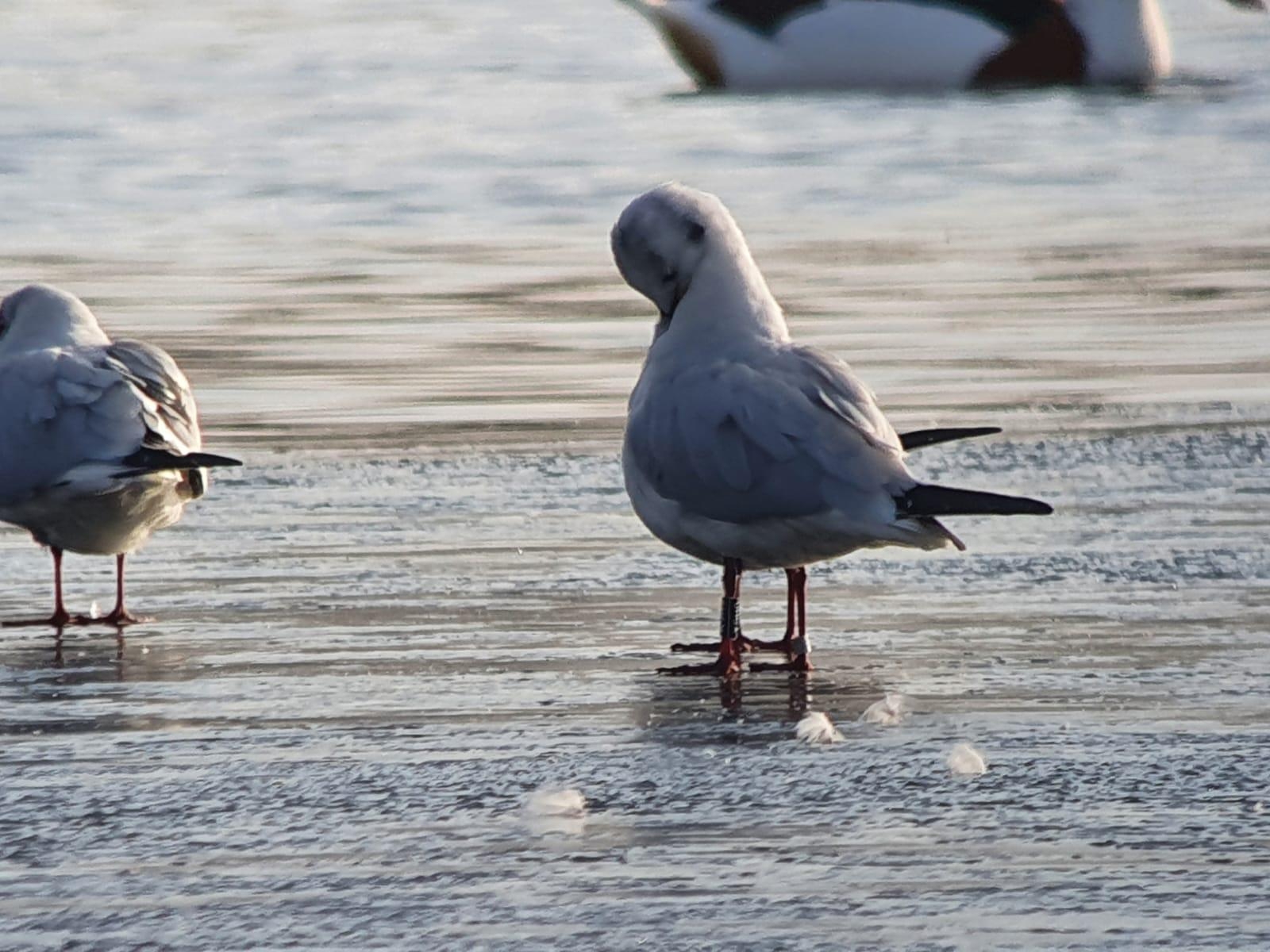
Several egrets have continued to roost on the reserve this week, a mixture of Little Egret, Cattle Egret and Great Egret. It is a treat to have these birds now regularly with us and in such good numbers.
Whilst out completing some of our winter management works in the tractor Martin was followed around the Top New Piece by several Stonechat on the look out for any insects he disturbed as he passed. Thanks to the freezing conditions we've been able to access more sensitive areas of the reserve whilst they're frozen and cause no disturbance to our birds - and here we've even had them coming to us instead!
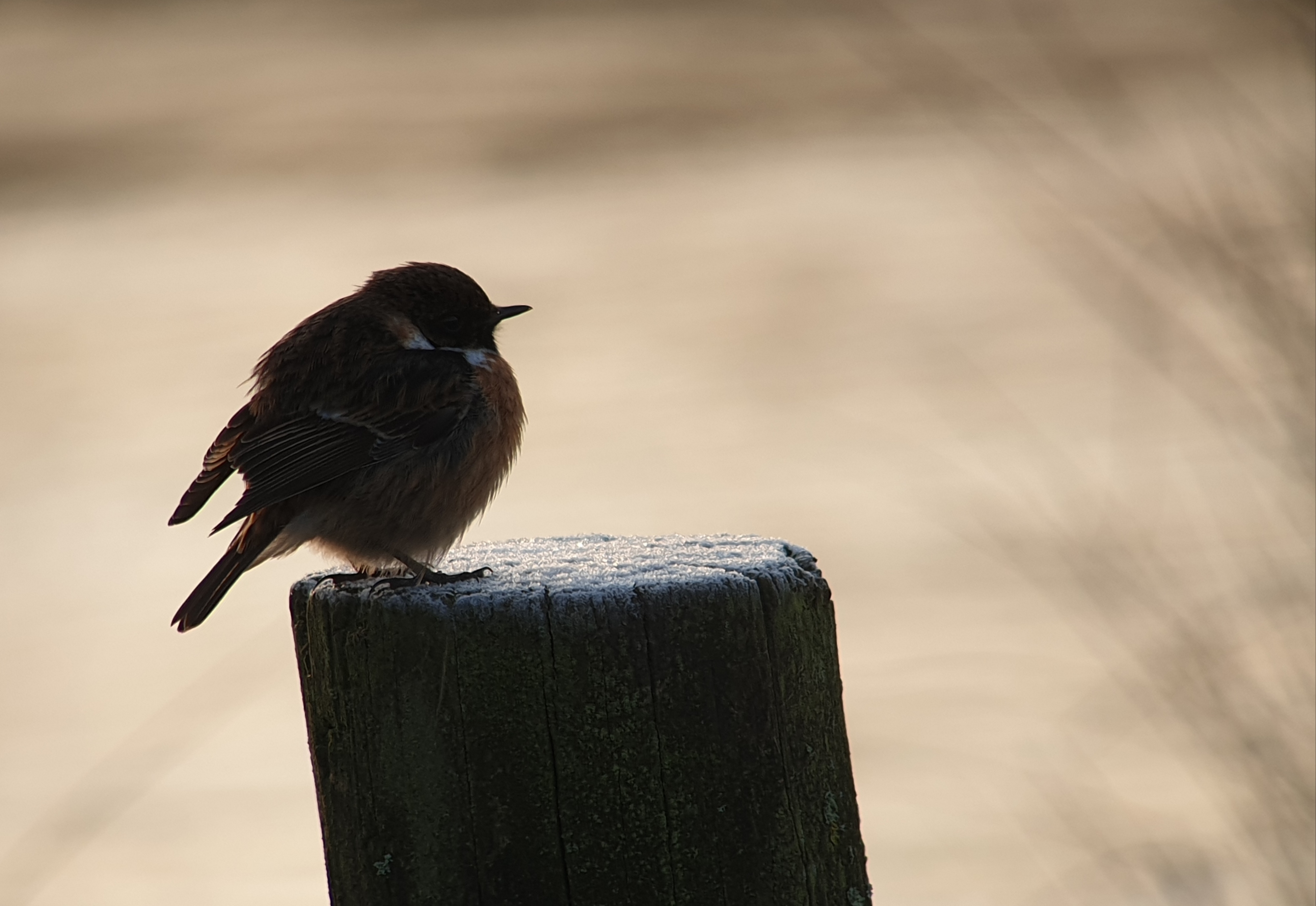
The Reserve Team have been busy with more coppicing work, this week targeting trees growing in some of the reedbed areas. We want to keep a mosaic of trees throughout reedbed as they provide good nesting opportunities for birds and help increase invertebrate diversity too - essentially more bird food! However if we allowed all the trees to grow and develop to maturity we'd lose this valuable reedbed habitat as it changed to woodland which is not suitable for wildlife such as Bittern or Marsh Harrier, or the reedbed breeding warblers who will arrive in a few weeks time, species such as Reed Warbler and Sedge Warbler.
Some of the coppicing has also been targeted to reduce the availabilty of predator-perches around key areas where our waders breed. Hopefully later this year we'll see a more productive year for our Lapwing, Redshank and other breeding waders as a result.
